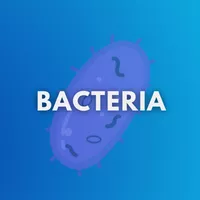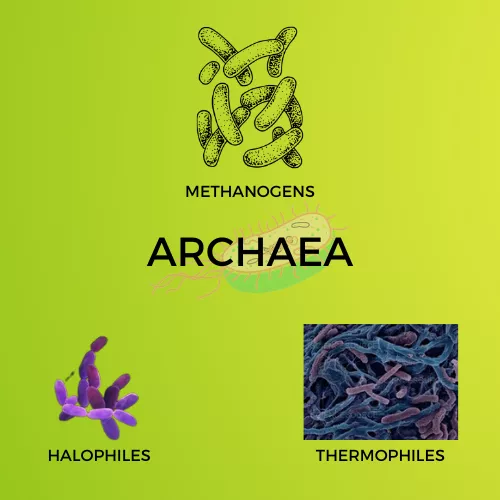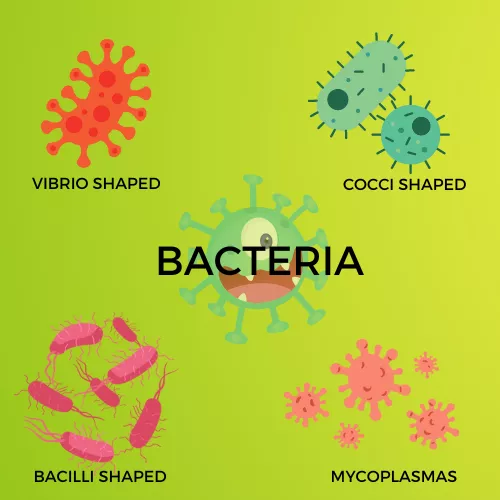Key Difference: Both these words come under the same microorganisms and have the same characteristics: Archaea and Bacteria. Both of these microorganisms will help in improving ecosystems and are harmful too. Archaea have unique pathways to energy production that are not found in bacteria. Archaea and bacteria have distinct evolutionary histories with different origins and divergent evolution. You can learn the significant differences between Archaea and Bacteria in this article.
Good Examples of the words “Archaea and bacteria” are.”
1. Archaea have different types of proteins and polysaccharides.
2. Bacteria do not have a nucleus.
ARCHAEA

Archaea are also called archaebacteria.
Archaea is a single-celled microorganism which has discovered in the late 1970s. It is different from bacteria and eukaryotes because it is prokaryotic. It can live in many environments, such as high temperatures and high-pressure areas. Furthermore, it is more beneficial, like an important contributor in a variety of environments, and has the potential as a source of new antimicrobial compounds. They are commonly found in anaerobic environments, such as the guts of ruminant animals and in deep-sea sediments.
The Best example of the word “Archaea” is “Archaea survive and thrive in extreme conditions.”
How do We Spell the Word Archaea?
Spell / Pronunciation in which a word or particular language is spoken among people. The Oral representation of the phrase archaea is “aa·kee·uh.” It would help if you practised it slowly for the outcome of a perfect spell. Below, you can know by hearing the audio of the word archaea.
Enunciation:
Syllabification is where we split the words into individual vowel sounds. A syllable should have at least one vowel in the word. For example, we will see the syllable of the word “Archaea.”
- Wondering if the word “Virus” has three syllables in it.
- The split is “AR-CHAE-A.”
How do We Pronounce “Archaea”?
Using “Archaea” in sentences:
- Archaea plays a major role in the carbon cycle.
- Are archaea and bacteria is same or different?
- Archaea have potential applications in the biotechnology and medicine field.
- Benefits of archaea it is used in the production of biogas and other fuels.
- Archaea is different from bacteria and eukaryotes.
BACTERIA

Bacteria are prokaryotic organisms.
Bacteria are microscopic, single-celled organisms with no nucleus and no organelles. Some bacteria are harmful and produce toxins; harmful chemicals affect them, and some are harmless. It is a prokaryotic and single cell’s organism. Humans have long used bacteria to create food products such as cheese, yogurt, and pickles. Most of the bacteria are fast-growing and are first called animalcules.
There are two types of bacteria, one is Gram-positive, and the other one is Gram-negative. The major difference in both types is gram-negative bacteria have an outer membrane in their body. The world’s first bacteria are cyanobacteria. Bacteria are the smallest living organism on this planet. The main characteristic of bacteria is it doesn’t have membrane-bound organelles in its body. The Best Example of Bacteria is “Bacteria lives in pH neutral.”
How do We Spell the Word Bacteria?
The vocal representation of the word Bacteria is “bak·teeuh·ree·uh,“ and in the below, you can know by hearing the audio of the phrase bacteria.
Enunciation:
Syllabification is where we split the words into individual vowel sounds. A syllable should have at least one vowel in the word. For example, we will see the syllable of the word “Bacteria.”
- I wondered if the word “Bacteria” has four syllables.
- The split is “BAC-TE-RI-A.”
How do We Pronounce “Bacteria”?
Using “Bacteria” in sentences:
- Bacteria are disease-causing microorganisms.
- We need to wash our hands using soap to kill bacteria.
- Leeuwenhoek is the father of bacteria.
- How are the bacteria spreading?
- The size of the bacteria is 0.4–3 µm3.
Similarities between Bacteria & Archaea
The title reveals the difference between Bacteria & Archaea. But, like, you want to know also similar things about the above two words. So come, let’s see below.
- Both Bacteria and Archaea are prokaryotes that lack a nucleus, and also both are smaller when compared to eukaryotes and unicellular organisms.
- Both share metabolic pathways like the glycolysis cycle and have similar cell wall structures. Some bacteria have peptidoglycan in their cell walls, and some archaea have pseudo-peptidoglycan.
Compare: ARCHAEA & BACTERIA
| ARCHAEA | BACTERIA | |
|---|---|---|
| DEFINITION | It is a very simple single-celled microorganism that plays an important role in ecological processes. | It is a large group of microorganisms which is a unicellular one. |
| SYNONYMS | Archaebacteria, Archaeobacteria Pathogen, Microbe, Ancient bacteria, Extremophiles, | Microorganisms, Bacilli, Bugs, Pathogens, Contagion. |
| TYPES | Methanogens Thermophiles Halophiles Extremophiles | Coccus form – Spherical-shaped Bacillus form – Rod-shaped Spirilla form – Spiral-shaped Vibrio form – Comma-shaped |
| BENEFICIAL | Most archaea are beneficial to ecosystems and to other organisms. | Some bacteria are useful. |
| REPRODUCTION | Archaea reproduce through binary fission and also by genetic material like horizontal gene transfer. | Bacteria reproduce through binary fission. |
| EXAMPLES | Archaea produce new traits through horizontal gene transfer. Archaea, such as halophiles, produce enzymes. Extremophiles is the term used to describe archaea. Archaea adapted to live in a high-temperature environment. Whether archeae is harmful or beneficial? | Bacteria are microscopic organisms. Bacteria eat starches and sugars. E. coli is the main type of bacteria in food. The other name of bacteria is animalcules. Bacteria have flagellum to move its body. |
Infographic Representation:


Resources & References:
Resources: Cambridge Dictionary (Archaea & Bacteria), Merriam-Webster (Archaea & Bacteria), Dictionary.com (Archaea & Bacteria)
Reference: Dictionary.Cambridge.org[1], Merriam-Webster. com[2][3], Dictionary. com[4].
